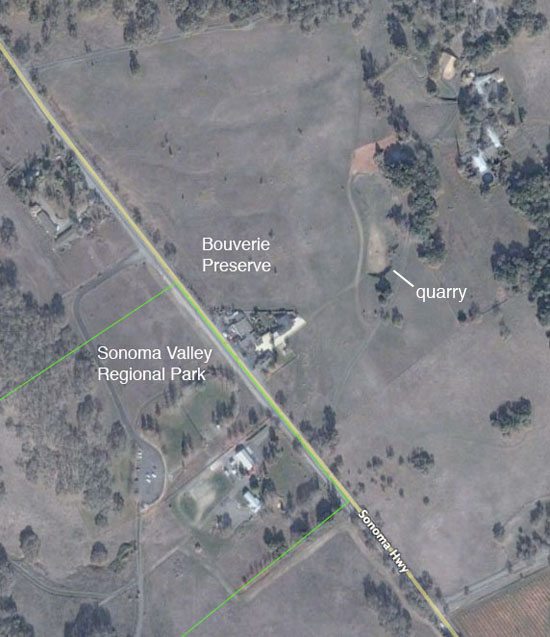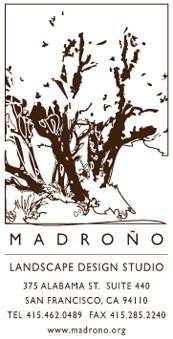Water paints with shifting colors the divided contours of the Valley of the Moon in Sonoma, California. The blues and greens of oak and bay forests on protected north-facing slopes complement the fire and earth tones of chaparral on the south-facing sides. Here at the southern end of the basin, riotous riparian woodlands follow snaking Stuart Creek through a steep canyon to Agua Caliente, the pepper of volcanic springs beneath the valley floor. Lowland meadows collect water in seasonal puddles, where vivid wildflowers come and go with the equinox.
 On two sides of the Old Sonoma Highway, one such meadow is divided by two authorities. The southwest side of the field falls within the boundaries of Sonoma Valley Regional Park, a public 162-acre parcel near Glen Ellen; the northeast side belongs to the Bouverie Preserve, a 500-acre jewel in the private necklace of Audubon Canyon Ranch.
On two sides of the Old Sonoma Highway, one such meadow is divided by two authorities. The southwest side of the field falls within the boundaries of Sonoma Valley Regional Park, a public 162-acre parcel near Glen Ellen; the northeast side belongs to the Bouverie Preserve, a 500-acre jewel in the private necklace of Audubon Canyon Ranch.
A former quarry beside the Bouverie visitor center (rumored to have supplied the stone for the nearby Jack London House) is today a vernal pool, a depression of hardpan that fills with water in winter and goes bone dry in summer. Smaller pools and swales sweep the adjacent meadow in a network of linked seasonal wetlands -- up to Highway 12, of course -- then continue as another isolated system on the other side of the road. Spring sees the transition from flood to drought in these unforgiving flats, a mere sliver of time in which a succession of highly adapted native plants take the stage and dance with the reaper for a week or two, then disappear again.

